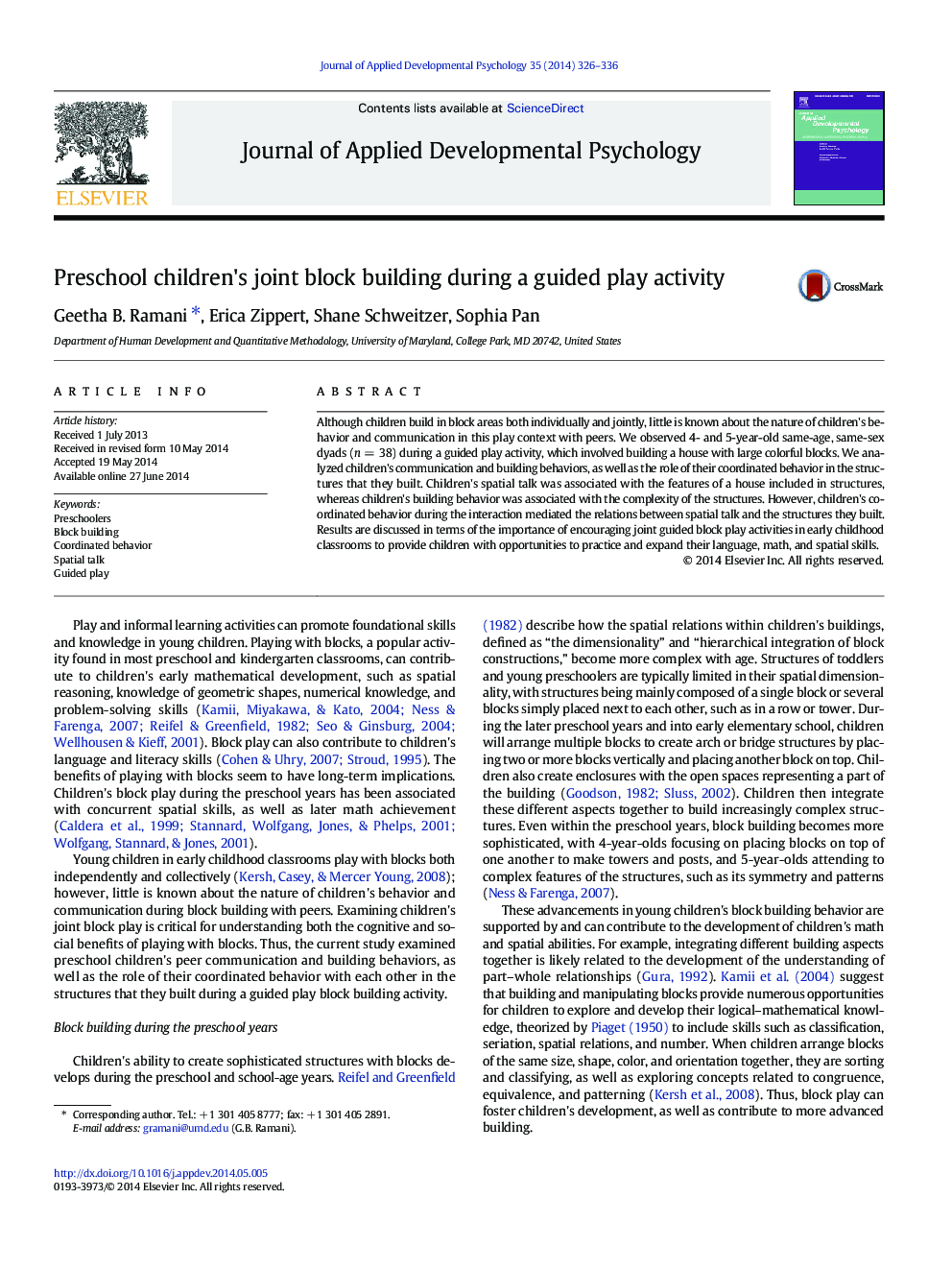| Article ID | Journal | Published Year | Pages | File Type |
|---|---|---|---|---|
| 359639 | Journal of Applied Developmental Psychology | 2014 | 11 Pages |
•We observed preschool dyads during a guided block play activity.•Girls included more structural features of a house in their buildings than boys.•Children's building behavior predicted the complexity of their structures.•Coordinated action mediated relations between spatial talk and building performance.
Although children build in block areas both individually and jointly, little is known about the nature of children's behavior and communication in this play context with peers. We observed 4- and 5-year-old same-age, same-sex dyads (n = 38) during a guided play activity, which involved building a house with large colorful blocks. We analyzed children's communication and building behaviors, as well as the role of their coordinated behavior in the structures that they built. Children's spatial talk was associated with the features of a house included in structures, whereas children's building behavior was associated with the complexity of the structures. However, children's coordinated behavior during the interaction mediated the relations between spatial talk and the structures they built. Results are discussed in terms of the importance of encouraging joint guided block play activities in early childhood classrooms to provide children with opportunities to practice and expand their language, math, and spatial skills.
